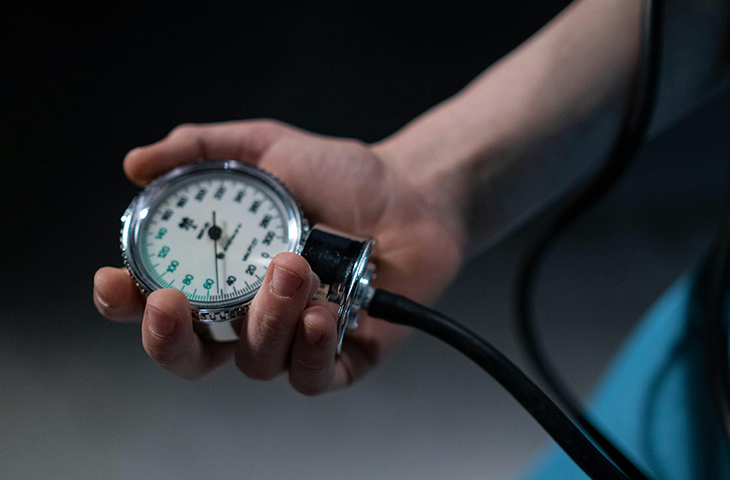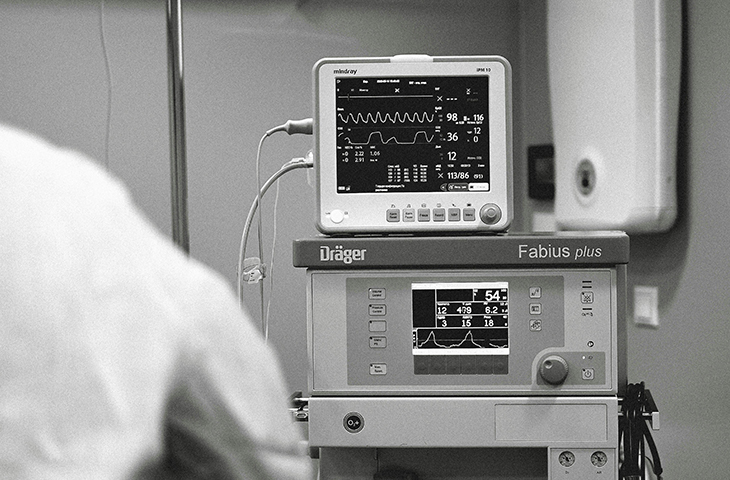Trump’s Accidental Win For Public Health

The EBCreate “Miami Mint”–flavored vape is truly a wonder. The device is not particularly technologically advanced; the electronic components inside consist of little more than a battery and a heating coil that turns liquid into mist. The vape smells like a mojito that’s gone a bit sour. But for $25 at my local vape shop, I got this tiny trinket that, by one estimate, contains the amount of nicotine found in 25 packs of cigarettes.
Along with nearly every other flavored vape, it’s also illegal. Though these products are popular and easy to find, they haven’t received the regulatory approval necessary to be sold in stores. Health officials have been unsuccessful at cracking down on these e-cigarettes in large part because they are made overseas and then smuggled into the country. Without government oversight, these devices can be unsafe: Vaping is essentially the equivalent of inhaling a pharmaceutical drug from an unregistered factory, and the devices risk hooking teens on nicotine. But the tricky thing about vapes is that eradicating them might not be in the interest of public health. As I’ve previously written, they’re a helpful off-ramp from smoking for adults who aren’t ready to kick nicotine. Because they don’t burn tobacco, vapes are much safer than cigarettes yet still deliver a similar high.
[Read: Public health as a blueberry-banana problem]
Soon, however, flavored vapes could get much less affordable. The overwhelming majority of illicit vapes are made in China—including mine, which, according to its packaging, was manufactured in Hong Kong. That means these devices are now caught up in President Donald Trump’s tariffs. Chinese-made vapes are subject to a 170 percent tax when they enter the U.S., which will “end up being reflected in the form of higher prices that consumers pay,” Mike Pesko, an economist at the University of Missouri who studies vapes, told me. By most accounts, Trump’s trade war with China is incredibly reckless and shortsighted. But on the issue of vapes, it may actually inject some reason into the chaos.
Exactly how vapes make their way from Hong Kong to smoke shops in Brooklyn or Tuscaloosa is convoluted. At times, the industry can be gallingly lawless. Consider my Miami Mint vape. The brand that made it, EBCreate, used to be called Elf Bar. Its products were especially popular with kids, so the company quickly landed in the crosshairs of FDA regulators. The agency has sent warnings to the companies distributing these products on behalf of Elf Bar, it has fined the shops that sell them, and regulators have even attempted to ban their import into the United States. And yet, the company continues to operate and regularly ship its products here; the name change from Elf Bar was reportedly an attempt to evade the recent import ban. (EBCreate did not respond to a request for comment.)
Because Chinese vapes are illegal, many of the larger chains that sell cigarettes refuse to stock them. So specialty vape shops and smaller convenience stores have taken on all the risk. Exactly how tariffs on vapes will play out isn’t yet clear. For now, prices haven’t budged, but expect price hikes. One retailer has published a blog post warning that “the price of e-cigarettes will definitely increase significantly.”
Although Chinese vape manufacturers have reportedly been known to purposefully mislabel their products as battery chargers or flashlights, the fact that Trump’s tariffs are applied to all goods from China will make it “very hard for the Chinese manufacturers just to mislabel an e-cigarette” in an effort to avoid a tariff, Donald Kenkel, an economist at Cornell, told me. Most vape shops are not massive corporations that can afford to absorb a tariff and sacrifice profits to keep customers happy, so they might have little choice but to raise prices. Paying $50 for a Miami Mint e-cigarette might seem worth the cost to someone who is hooked on nicotine, but when vape prices go up, research suggests that some consumers stop buying. If the tariffs persist in their current form, the price hikes could be steep enough that vape stores go out of business.
Considering that more than 1.6 million American kids are regularly vaping, the mass closure of smoke shops might feel a bit like fumigating an infestation. Higher prices come with a trade-off: When vapes get more expensive, some people turn back to cigarettes. Still, tariffs could simultaneously help root out the most concerning aspects of vapes while maintaining much of their promise. Adults who want to vape have a few legal options. Three vape companies have received FDA authorization to sell their products, and you can find them in major convenience stores such as 7/11. But they are struggling to compete with their illegal counterparts. Doug Kantor, the general counsel of the National Association of Convenience Stores, a lobbying group, told me that many of his association’s members “have lost customers and a lot of sales to people who are willing to carry illegal products.”
Part of the problem is that the legal vapes come in just two flavors: menthol and tobacco. (Smokers can find more flavors in nicotine pouches such as Zyn, which is currently available in 10 different flavors, including cinnamon, citrus, coffee, and whatever “Chill” is.) The Chinese-made versions also just offer far more bang for your buck. A legal product like R. J. Reynolds Vuse Alto appears at first glance to be cheaper than its Chinese competitors—my local 7/11 charges $18.99 for a single “All-in-one kit.” But that vape contains only 1.8 milliliters of nicotine vape juice. For just a few dollars more, you can choose from many Chinese alternatives that contain seven times the amount of nicotine. In January, the tobacco giant Altria, which sells the e-cigarette Njoy, warned investors that its vape business wasn’t growing as expected, because “the illicit e-vapor market has grown to a size and scale beyond our expectations.”
Tariffs could give an edge to legal vapes. Unlike those of their Chinese competitors, their bottom lines will not be seriously hurt by the trade war. A spokesperson for Reynolds American told me in a statement that the company has “diversified some of our production to locations outside of China, so we feel that we are well-positioned” to weather the tariffs. Yesterday, Altria noted on an earnings call that it is “predominantly a U.S. company with a U.S.-focused supply chain.” It’s hard to get excited about a trade policy that ends up propping up the likes of Altria and Reynolds American, both of which sell billions of deadly cigarettes each year. But hiking the price of illegal vapes will likely improve public health. Yes, a portion of vapers will go back to smoking because of the tariffs, but others will turn to products that have actually been vetted by regulators for safety. And the more expensive the vape, the less likely kids are to pick it up.
Trump’s tariffs are akin to performing surgery on the economy with a sword rather than a scalpel. But in the case of vaping, none of the precision policies has worked. Millions of Americans are inhaling an addictive substance into their lungs that is being illegally sold in stores with no oversight. Tariffs, for all their faults, might finally offer a solution.


